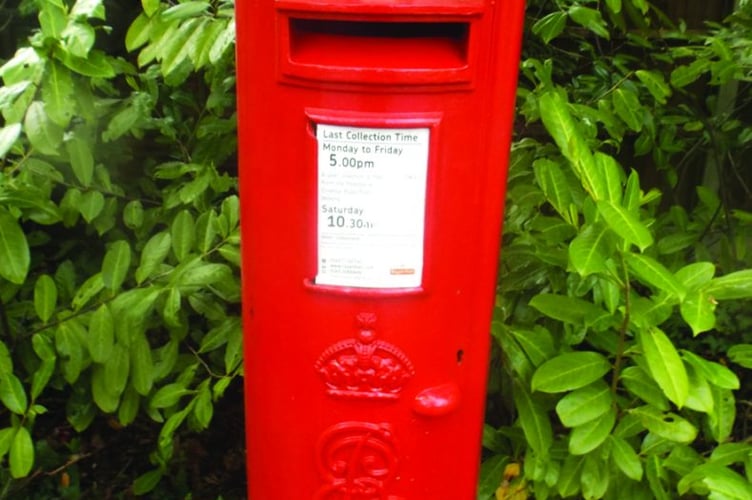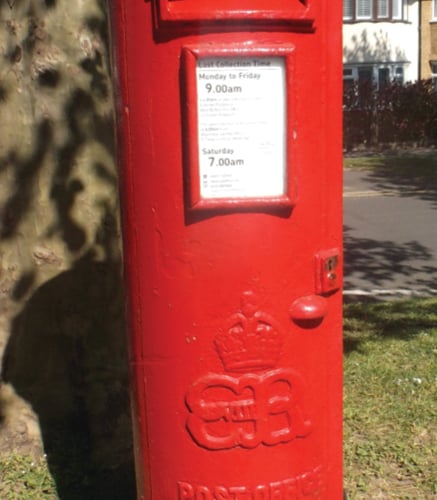HOW many of us take time out to have a good look at the familiar red postbox when posting letters?
Many will know that the royal cypher on them dates each one to the monarch at the time they were installed. Featured here are three fairly old ones: a now-redundant wall box from Queen Victoria’s reign, one from the time of Edward VII, and one of the rare examples from the short reign of Edward VIII.
Reader Mark Coxhead has photographed them and kindly supplied some historical details.
It was with the rapid growth of correspondence following the introduction of uniform penny postage on 6 May 1840 that a demand for more posting facilities arose.
The public began pressing the Post Office to follow the example of France and provide roadside posting boxes.
They were first trialled on the Channel Islands, with four at St Helier on Jersey in 1852 and more in St Peter Port, Guernsey, the following year.

London did not receive its first roadside letterboxes until 1855, when six were installed. They were rectangular in shape and stood approximately five feet in height.
Between 1866 and 1879, boxes of a hexagonal design, known as Penfolds, after the architect, were installed throughout the country. However, there were many complaints about letters being caught up and delayed by faults in the internal mechanism of the boxes.
So in March 1879 the pure cylindrical design was introduced, and further modifications were incorporated over the years, including double pillarboxes in London in 1899.
In November 1887, the royal cypher and wording “Post Office” in the collar of the rim of the roof were added.
A new design, that was not cast iron, was introduced in November 1968. It was made of easily replaceable rectangular panels, fixed to an internal frame. The design incorporated an improved internal mechanism for it to be emptied far more quickly.

Field trials were held with 201 of these rectangular boxes throughout the country, one of which was at Albion Square in Woking opposite the railway station entrance. However, there were difficulties with the new design and the one in Woking fell to bits. The project was later abandoned.
Originally, postboxes were painted a dingy bronze-green. To make them stand out more, a trial was held in early 1874 and seven boxes in London were painted red. The change was gradually implemented in the provinces as and when they needed repainting. This process took ten years to complete.
A Victorian wall box, now out of commission, is adjacent to St Nicholas’ Church, Pyrford. This box was cast by Smith & Hawkes of Broad Street, Birmingham, during the period 1861 to 1871. It is known as “wall box no. 2 (small)”.
An Edward VII (who reigned from 22 January 1901 to 6 May 1910) pillarbox survives along Old Woking Road, West Byfleet.
During the brief reign of Edward VIII (20 January 1936 to 11 December 1936), 271 letterboxes were manufactured. Of these, 161 were the traditional pillarbox, six were wall boxes and the remaining 104 were for use within sub-post offices. After his abdication, many boxes bearing his cypher were modified or replaced.
Today about 132 Edward VIII pillarboxes remain in use throughout the country. One of these is at the junction of Hollies Avenue and Woodlands Avenues in West Byfleet.
If you have some memories or old pictures relating to the Woking area call David Rose on 01483 838960, or drop a line to the News & Mail.
David Rose is a local historian and writer who specialises in what he calls “the history within living memory” of people, places and events in the west Surrey area covering towns such as Woking and Guildford. He collects old photos and memorabilia relating to the area and the subject, and regularly gives illustrated local history talks to groups and societies. For enquiries and bookings please phone or email him at: [email protected]




